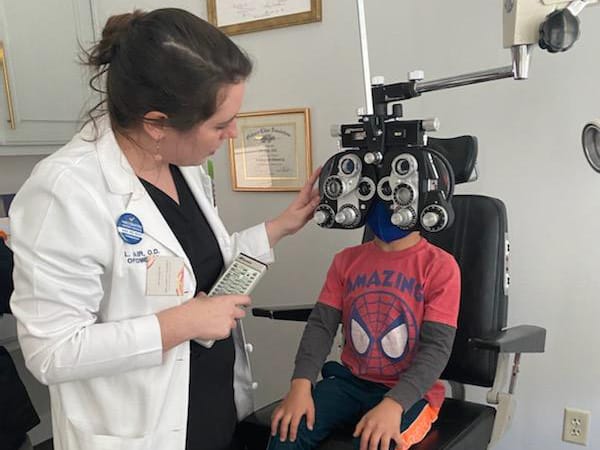Myopia Management
Learn about Myopia and how Achord Eye Clinic can help you.
What is myopia?
Myopia, also called nearsightedness, is a common vision condition that requires glasses or contacts to correct. Myopic individuals see nearby objects clearly, but objects that are far away are blurred. Typical “school-age” myopia can be diagnosed as young as 5-6 years old and is caused by the eye continuing to elongate after it should have stopped growing. Myopia is caused by both genetics and environmental factors. Spending more time outside has been proven to prevent the onset of myopia.
Why does it matter?
Once a child becomes myopic, their eyes will continue growing and elongating as they age. This is the reason children need new glasses every year. Usually, this elongation process stabilizes around 17-18 years old, though it has been observed to continue further into the twenties. The more nearsighted someone is, the higher the impact of their prescription on their daily life, and the more dependent they will be on their glasses or contacts. The more myopic one becomes, the higher the risk for a variety of sight-threatening eye conditions, including glaucoma, retinal detachment, and macular degeneration. Once a prescription gets higher than -4.00 diopters, the risk is so high that it becomes almost a certainty that one of these conditions will occur at some point in a myopic individuals’ lifetime.
What can we do about it?
While standard glasses and contact lenses correct blurry distance vision, they do not slow down the yearly increase in nearsightedness. There are several interventions that are proven to reduce this increase in nearsightedness. These interventions include:
- Specially designed contact lenses
- Orthokeratology – Costs for our orthokeratology program starts at $1950.
- MiSight contact lenses– Costs for our multifocal contact lens program range from $204-350 per year. This does not include the cost of the contact lenses.
- Low-dose Atropine – Costs for our Atropine program range from $200-$300. This does not include the cost of the prescription eye drops.
- Specially designed glasses
Here at Achord Eye Clinic we will find the best of these treatments to slow or stop your child’s increasing myopic prescription. The goal of our Myopia Management Program is to lessen Myopia’s impact on their life and improve their future.
Schedule a consultation visit today to talk with Dr. Hair about the Myopia Management options available at Achord Eye Clinic [PDF download].

Further Reading
- Myopia Control: Why Each Diopter Matters by Mark Bullimore and Noel Brennan Optometry and Vision Science, 2019
- My Kids Vision
- Myopia Institute
Scientific Reports on Myopia Control Interventions
- Prevention of Myopia and Its Progression by Jost Jonas et al in Investigative Ophthalmology and Vision Science, 2021
- Long-term Effect of Dual-focus Contact Lenses on Myopia Progression in Children: A 6-year Multicenter Clinical Trial by Paul Chamberlain, et al in Optometry and Vision Science, 2022
- Overnight orthokeratology by Mark Bullimore and Leah Johnson in Contact Lens and Anterior Eye, 2020
- Three-Year Clinical Trial of Low-Concentration Atropine for Myopia Progression (LAMP) Study: Phase 3 Results by Jason Yam, et al, in Ophthalmology, 2021
Research on the Safety of Contact Lenses in Kids
- The Safety of Soft Contact Lenses in Children by Mark Bullimore, Optometry and Vision Science, 2017
- The Safety of Orthokeratology- A Systematic Review by Yue M Liu Peiying Xie in Eye and Contact Lens, 2016